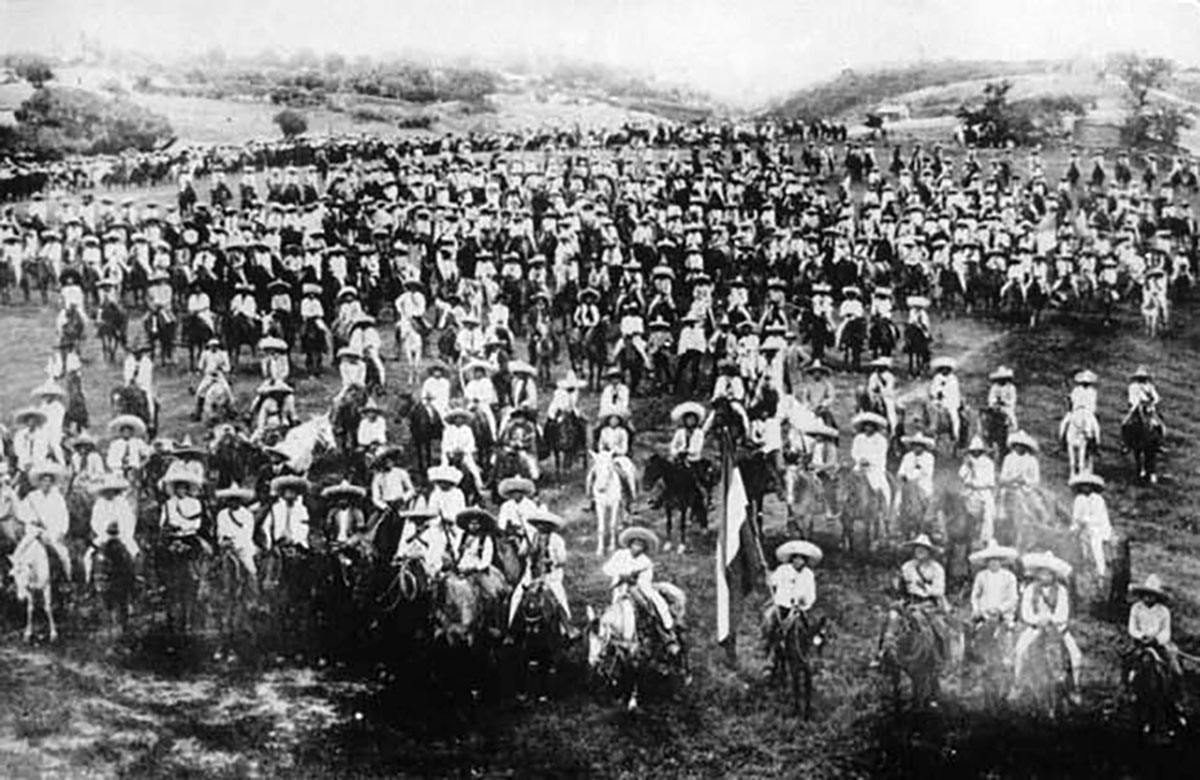Mexican Revolutionary leader Emiliano Zapata devoted his life to the idea that land should belong to those who work it.
As a peasant leader of the south, Zapata played important roles in the Mexican Revolution of 1910-1920 until he was murdered in 1919.
He remains an icon of Mexico. The full mustache is considered a symbol of his philosophy, Zapatismo.
What Zapata fought and died for remains a problem in Mexico and across the Americas today. People who have lived on and worked the land for generations are pushed off it by “land-owners” with government support. The people have nowhere to go and the land suffers too.
Anenecuilco, Morelos, Mexico
The future leader of the Zapatismo rebellion for land reform, one of the leaders of the Mexican Revolution, was born in Anenecuilco, Morelos, Mexico, a small town south of Mexico City on August 8, 1879.
Zapatismo
The Mexican Revolution of 1910 was a response to the terrible corruption of the Porfirio Díaz administration.
Zapata led the Liberation Army of the South and helped bring down President Díaz by defeating the Federal Army at the Battle of Cuautla in 1911. The Zapatista victory forced President Díaz to resign.

The rest of Zapata’s life is also the story of the Mexican Revolution.
President Madero
The former revolutionary Francisco Madero became Mexican President in 1911.
Zapata worked for land reform, but Madero turned on him. A scorched earth policy used by Victoriano Huerta’s Federal forces angered the peasants who chased them out of Morelos.
President Huerta
Huerta became Mexican President in 1913 through a coup which restarted the civil war.
Huerta was ousted in 1914 with the support of Pancho Villa and the Zapatistas.
President Carvajal
Francisco Carvajal became Mexican President in 1914, but only for one month. He transferred power to President Carranza.
This didn’t go well with the Zapatistas or with the leader of the Constitutionalist Army, Venustiano Carranza. The civil war continued in an extended period of turmoil.
As Carranza consolidated his power, he sent another army to take Morelos. Zapata’s forces pushed them out again.
Zapata was murdered in an ambush by Carranza’s forces in April 1919.
President Carranza
Carranza became Mexican President in 1917.
Zapatista forces helped drive Carranza from power on May 21 1920. This is considered the end of the Mexican Revolution.
President De la Huerta
Adolfo de la Huerta became the 38th President of Mexico in 1920. Though he only governed for six months, Zapatistas implemented many of Emiliano’s land reforms in Morelos during this period.
¡Viva Zapata!
